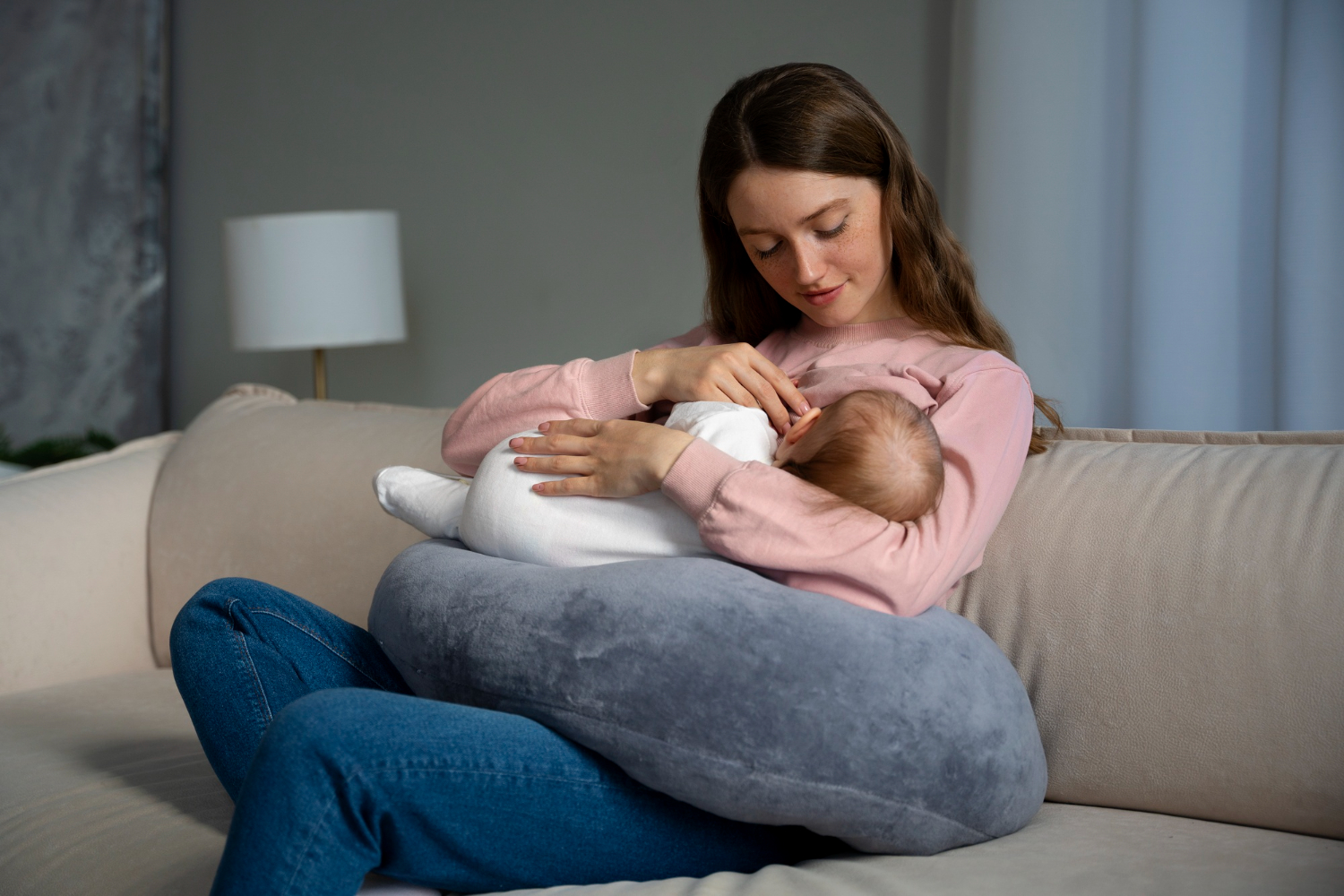When can I give my baby a pillow? Your baby can have a pillow after one year of age and only if they can move freely. Introduce it at bedtime by allowing them to touch and play with it.
When it comes to introducing pillows to your baby, it’s important to consider their safety and development. Pediatric experts advise waiting until your baby is at least one year old before introducing a pillow to their sleeping environment. This is because younger babies are at risk of suffocation or Sudden Infant Death Syndrome (SIDS) due to the potential hazards associated with pillows, such as blocking the baby’s airways or causing them to overheat.
However, once your child reaches the age of one and demonstrates the ability to move freely, you can consider introducing a pillow to provide them with additional comfort during sleep. Nonetheless, it’s essential to select a pillow specifically designed for infants and toddlers to ensure optimal safety and support for your little one. Always monitor your child when using a pillow to ensure their safety during sleep.
While many parents eagerly anticipate introducing pillows to their baby’s sleeping routine, it’s important to prioritize their safety and adhere to expert guidelines to promote healthy sleep habits for your little one. Moreover, creating a safe and comfortable sleep environment is essential to ensure your baby’s well-being. When considering introducing a pillow to your baby, consult with pediatric experts and select age-appropriate pillows to provide optimal comfort and support while prioritizing your baby’s safety.

Credit: ravihospital.org
When Is It Safe To Give Your Baby A Pillow?
It is safe to give your baby a pillow when they are at least one year old and able to move freely. If your toddler is sleeping well without a pillow, there is no need to introduce one yet.
According to experts, it is safe to give your baby a pillow when they reach at least one year of age. However, it is important to note that every child is different and may reach this milestone at different times. Before introducing a pillow, your baby should be able to move freely on their own.
When Can I Give My Baby a Pillow
At Least One Year Of Age
At around one year of age, your baby has developed enough strength and control to safely use a pillow. By this time, they have likely outgrown the risk of suffocation that comes with using pillows in their crib. Instead of using a regular adult-sized pillow, opt for a baby or toddler-sized pillow that is specifically designed for their needs. These pillows are smaller, providing just the right amount of support for your growing child’s head and neck.
When Your Baby Can Move Freely
Before introducing a pillow, it is crucial that your baby can move freely on their own. This means they can roll over, sit up, and even crawl without any assistance. This milestone is important because babies need to be able to adjust their sleeping position and move their head to prevent any discomfort or potential hazards that may arise from using a pillow.
When your baby can move freely, it indicates that their muscles and motor skills have developed sufficiently to handle the additional support provided by a pillow. However, always remember to supervise your baby during sleep to ensure their safety and remove any potential hazards from the sleeping area.
How To Introduce A Pillow To Your Baby
Introducing a pillow to your baby requires careful consideration, timing, and a gentle approach. Here are the important steps to consider when introducing a pillow to your baby.
Show Your Baby Their New Pillow At Bedtime
When it is safe for your baby to use a pillow, the best time to introduce it is at bedtime. Ensure the pillow is soft and age-appropriate, and place it in your baby’s crib while they settle down for the night. This allows your baby to familiarize themselves with the new addition to their sleep environment.
Let Them Touch And Play With It
Allow your baby to touch and feel the pillow while they are in the crib. Providing this sensory experience helps them establish a sense of comfort and familiarity with the pillow. This gentle introduction makes the transition smoother and helps your baby become accustomed to their new sleeping arrangement.
Safety Concerns With Pillows For Babies
Babies should not sleep with a pillow until they are at least one year old. It’s important for them to be able to move freely before introducing a pillow to their bed.
Avoid Elevating The Head Of The Crib

It’s important to avoid using devices or methods to elevate the head of a baby’s crib. Not only is this ineffective in reducing GER (gastroesophageal reflux), but it also poses a safety risk as it may cause the baby to roll to the foot of the crib, increasing the risk of entanglement or suffocation.
Risk Of Suffocation
Babies have undeveloped neck muscles, and using a pillow before the age of one can pose a risk of suffocation. The soft surface of a pillow can potentially obstruct the baby’s airway, leading to a dangerous situation. Therefore, it’s crucial to wait until the child is at least one year old before introducing a pillow into their sleeping environment.
When it comes to the safety and well-being of your baby, it’s crucial to take every precaution to prevent any potential harm. Avoiding the use of pillows and ensuring a safe sleep environment is vital for your baby’s health and safety.
Tips For Choosing The Right Pillow For Your Baby
It is not recommended to give your baby a pillow until they are at least one year old. Your child should be able to move freely before adding a pillow to their bed. If your toddler is sleeping well without a pillow, there is no need to introduce one yet.
Look For A Pillow Specifically Designed For Infants

Avoid using adult pillows for your baby, as they are not suitable for their fragile neck and head. Look for pillows that are specifically designed for infants, offering the right support and size for their small bodies. These pillows are usually made with soft and breathable materials to ensure your baby’s comfort during sleep. Additionally, they often come with features like contouring and hypoallergenic covers for added safety.
Consider Hypoallergenic Materials
Babies have delicate skin and are prone to allergies, so it’s important to choose a pillow made from hypoallergenic materials. These materials are less likely to cause irritation or trigger allergies, keeping your baby safe and comfortable while sleeping. Look for pillows made from organic cotton or bamboo, as these natural fibers are gentle on the skin and resistant to allergens. Avoid pillows with synthetic fillings or chemical treatments, as they may pose a risk to your baby’s health.
When selecting a pillow for your baby, it’s crucial to prioritize their safety and comfort. Opt for a pillow specifically designed for infants, providing the right support and size for their developing bodies. Look for hypoallergenic materials to prevent any potential skin irritations or allergies. By choosing the right pillow, you can ensure that your baby sleeps peacefully and comfortably. Remember, always consult with your pediatrician before introducing a pillow to your baby’s sleep routine.
Conclusion
When it’s time to introduce your baby to a pillow is an important question for many parents. According to physiotherapist Rikke Randrup Skaaning, it’s best to wait until your child can move freely before adding a pillow to the bed.
It’s recommended to introduce a pillow to your toddler at bedtime when it is safe for them to sleep with one. However, if your toddler is sleeping comfortably without a pillow, there is no urgency to introduce one. Remember, the safety and comfort of your little one should always be the priority.

